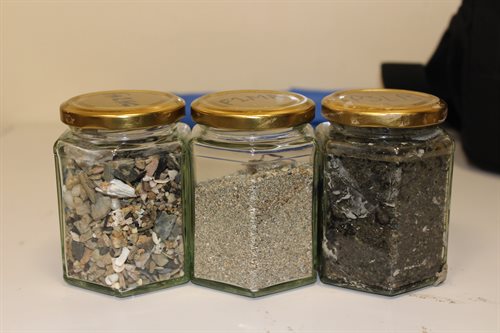 Rationale: Although local case studies provide evidence of freshwater microplastic (MP) contamination, a local approach limits the potential for generalisation and up-scaling of site-specific research. The absence of systematic freshwater microplastic surveys impedes our understanding of how their concentration, composition and properties vary globally.
Rationale: Although local case studies provide evidence of freshwater microplastic (MP) contamination, a local approach limits the potential for generalisation and up-scaling of site-specific research. The absence of systematic freshwater microplastic surveys impedes our understanding of how their concentration, composition and properties vary globally.
Research question: This project aims to understand the distribution of MPs in rivers globally, and in particular how their physical (size, shape, density) and chemical properties (incl. additives such as Bisphenol A (BPA) and Nonylphenol (NP)) differ. MP characteristic differences are expected in relation to catchment properties, prevalence of primary and secondary MP sources, and hydrodynamic and sediment conditions.
Objective: Develop a simple, robust, low-cost, standardised and well-documented approach for the first coordinated global MP river survey to advance site-specific knowledge towards generic and transferable system level understanding.
Methods: Utilising global partnerships, sediment and water samples are being collected from a range of rivers with a custom-made low-cost yet robust sampling kit. Sediment and water samples collected globally will be returned to the University of Birmingham whereby microplastic contamination will be quantified using various novel techniques such as Nile Red and Thermo-Gravimetric-InfraRed-Gas Chromatography/Mass Spectrometry (TG-IR-GC/MS). The comparison of low-tech (field applicable) and high-tech (laboratory-based) approaches will be utilised to benchmark the utility of the field approaches for routine monitoring.
All data collected will be GPS tagged and dated, and the results will be compiled into an open-access and FAIR (Finable, Accessible, Interoperable and Re-suable) database hosted by UoB.
Partners involved with Work Package 1: Currently we have partners from French Guiana, Punta Arenas and Argentina – South America.
In Africa we have Nigeria, Sierra Leone, Zambia, Kenya and South Africa. Both Canada and the United States of America are represented, as well as Australia and New Zealand. In Southeast Asia we have partners from Indonesia, Malaysia, Thailand and Cambodia.
We also have 17 partners in the United Kingdom sampling rivers from Scotland, Wales and Great Britain. In Europe partners are located in Spain, Finland, Brussels and Greece.
We are always looking for more partners so if you are currently working on microplastics or already work in a freshwater system and can collect sediment and water samples. The 100 Plastic Rivers team will send you a sample kit and standardised protocol. The samples will then be sent back to UoB for further analyses.